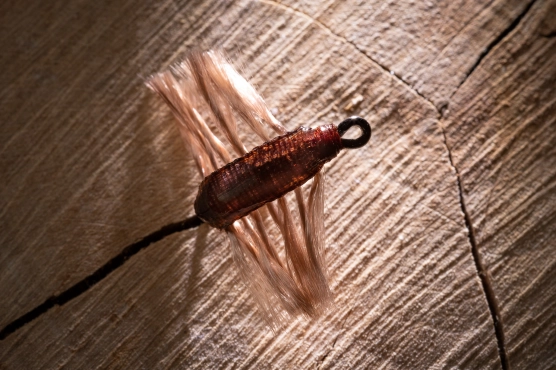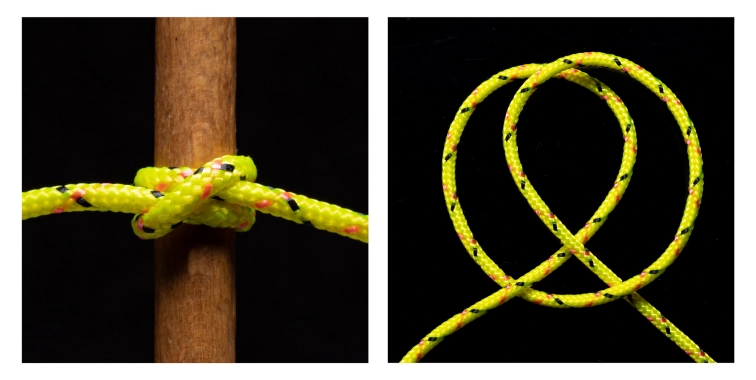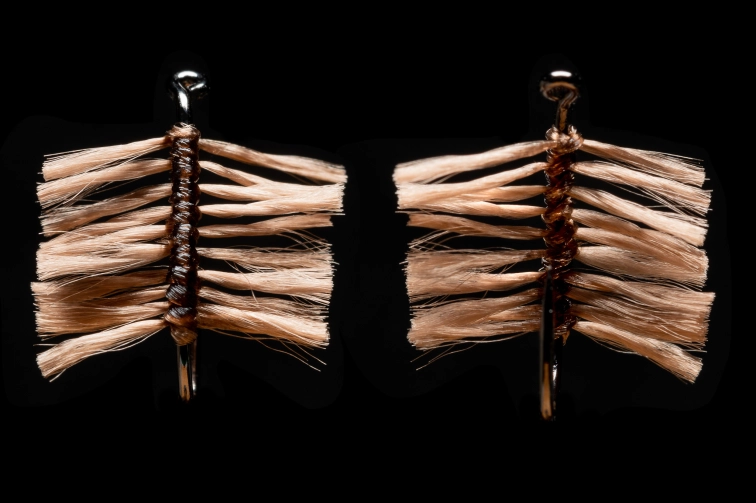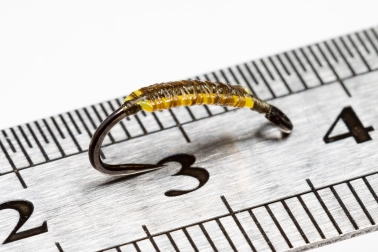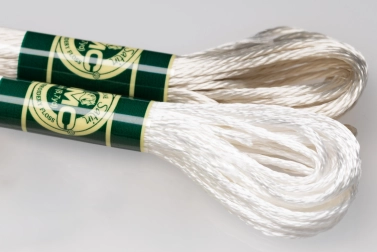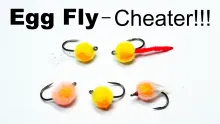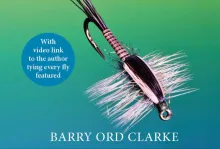The hoglouse is also known as a sowbug or a cress bug, and is a very common freshwater crustacean. Here’s an easy imitation using an interesting tying technique.
Asellus aquaticus is a freshwater crustacean known by a variety of regional names including hoglouse, sowbug, pond slater, water louse, and cress bug. The little critters are common throughout Europe and the USA in rivers and lakes, particularly wherever there are stones or gravel for them to hide while they feed on decaying plant matter. They make a tasty snack for trout and other fish in the waters where they are found.
They resemble a shrimp or scud that has been squashed from above, with flattened bodies and legs that stick out sideways rather than down. Most hoglouse/sowbug imitations are tied the same way as shrimps/scuds but on a straight hook and with the dubbing representing the legs brushed out sideways. Some patterns incorporate a lead underbody flattened with pliers to accentuate the flat profile of the body.
The Hitched Hoglouse takes a different and more imitative approach using a series of clove hitch knots to create the characteristic sideways pointing legs of the little crustacean. A clove hitch is a simple adjustable knot that is used for many purposes. In the past I’ve used it for securing fenders to boats and for equalising the load on climbing anchors. I’ve never had cause to use it for fishing, until this pattern. The easiest way to tie a clove hitch, whether onto an open carabiner, the shaft of an ice axe, or in this case a hook, is to form two opposed loops in a length of cord, overlap the loops and pass them over the eye of the hook.
When tightened the ends of a clove hitch stand out at ninety degrees from the knot, which makes it a useful way of forming legs on either side of a fly. The simple way to tie a clove hitch on a hook is as follows.
- Take a length of material and hold each end between your fingers and thumbs.
- Twist and form a loop and then repeat to form a second loop so you have one free end in front of the first loop and the second end behind the second loop.
- Bring the loops together with the second in front, pass the overlap over the hook eye and pull the ends in opposite directions to tighten the knot.
With a bit of practise, the process becomes automatic and fairly fast. I’ve timed myself and average around five seconds per pair of legs.
Tying a number of clove hitches onto a bare hook, sealing the knots with superglue or UV-resin and then trimming the ends of the knots will make a passable approximation of a multi-legged critter. It would most probably catch fish. However, a bit of work before tying the knots yields a more realistic imitation. To widen the body of the hoglouse and create the characteristic flat shape I tie in heavy monofilament on either side of the hook shank and secure with a coat of superglue. If you want to add some weight, then use some copper or lead wire.
The legs can be tied with a number of materials, but I find DMC satin embroidery floss to be good to work with. The rayon thread comes in hanks of six twisted strands which are easily separated to give a suitable thickness for tying. If you want to tie very small flies each strand can be further subdivided into two.
Nick Thomas
The clove hitch technique can be used with different materials to produce a range of patterns from lures and attractors to realistic imitations. Flexi-floss clove hitched onto a bare hook and secured with superglue makes a multilegged wriggly attractor pattern. Knotting white embroidery floss, trimming the ends short and brushing out the fibres makes realistic looking gills on a Hydropsyche imitation.
- Log in to post comments

